Every year, millions of people around the world take medications that help them feel better, manage chronic conditions, or survive life-threatening illnesses. But behind every pill, injection, or vaccine is a hidden system working to catch mistakes before they hurt someone. That system is medication safety-a global network of monitoring, reporting, and action that keeps drugs safe for everyone. If you’re a healthcare worker, a patient, or even just someone who cares about health, staying informed isn’t optional. It’s essential.
Why Global Medication Safety Matters
You might think drug safety is just about recalls or warning labels. It’s not. It’s about catching problems early-before they become outbreaks. The World Health Organization (WHO) estimates that medication errors cost the global healthcare system $42 billion a year. Worse, fewer than 10% of adverse drug reactions are ever reported. That means for every serious side effect that makes the news, dozens go unnoticed. This isn’t just a numbers game. A child given the wrong dose of a painkiller. An elderly person having a stroke because a new blood thinner interacted with their old heart medication. A vaccine reaction missed because no one knew how to report it. These aren’t hypotheticals. They happen every day. And the only way to stop them is to know what’s going on-and act on it.Where to Find Real-Time Medication Safety Updates
The good news? There are trusted, official sources that update daily. You don’t need to guess. You don’t need to scroll through social media rumors. Here’s where to go:- World Health Organization (WHO) Medicines Safety Updates - WHO releases official alerts on drug risks, new safety guidelines, and global trends. Their May 2025 update on controlled medicines (like opioids and benzodiazepines) was a major milestone, balancing access with safety.
- Uppsala Monitoring Centre (UMC) - This is the backbone of global drug safety. They run the WHO Programme for International Drug Monitoring, which connects 150 countries. Their site has real-time data on side effects and alerts.
- U.S. Food and Drug Administration (FDA) Sentinel Initiative - This system tracks 300 million patient records in the U.S. to spot patterns in real time. If a new diabetes drug starts causing unexpected kidney issues, you’ll see it here first.
- UK Medicines and Healthcare products Regulatory Agency (MHRA) Yellow Card Scheme - One of the oldest and most effective reporting systems. You can report side effects online or via their mobile app. It’s simple, fast, and used by millions.
- U.S. Pharmacopeia (USP) - They set the standards for how drugs are made, labeled, and used. Their 2025-2030 focus includes pharmacogenomics and electronic health system safety-critical for preventing dosing errors.
Follow the Campaigns That Drive Change
Global awareness doesn’t happen by accident. It’s driven by coordinated campaigns. The biggest one is #MedSafetyWeek, held every first week of November. In 2025, it’s celebrating its 10th anniversary with the theme: “We can all help make medicines safer.” During #MedSafetyWeek, hospitals, pharmacies, and clinics around the world share posters, host training sessions, and push people to report side effects. You can sign up for free materials from the UMC website starting in August. These include printable flyers, social media graphics, and even training videos for staff. Don’t forget World Patient Safety Day on September 17. Each year, WHO picks a theme. In 2025, it’s “ensuring safe care for every newborn.” That means new guidelines on pediatric dosing, safer delivery of antibiotics, and better monitoring for babies on IV meds. These aren’t just events. They’re wake-up calls. And they’re when the most useful tools become available.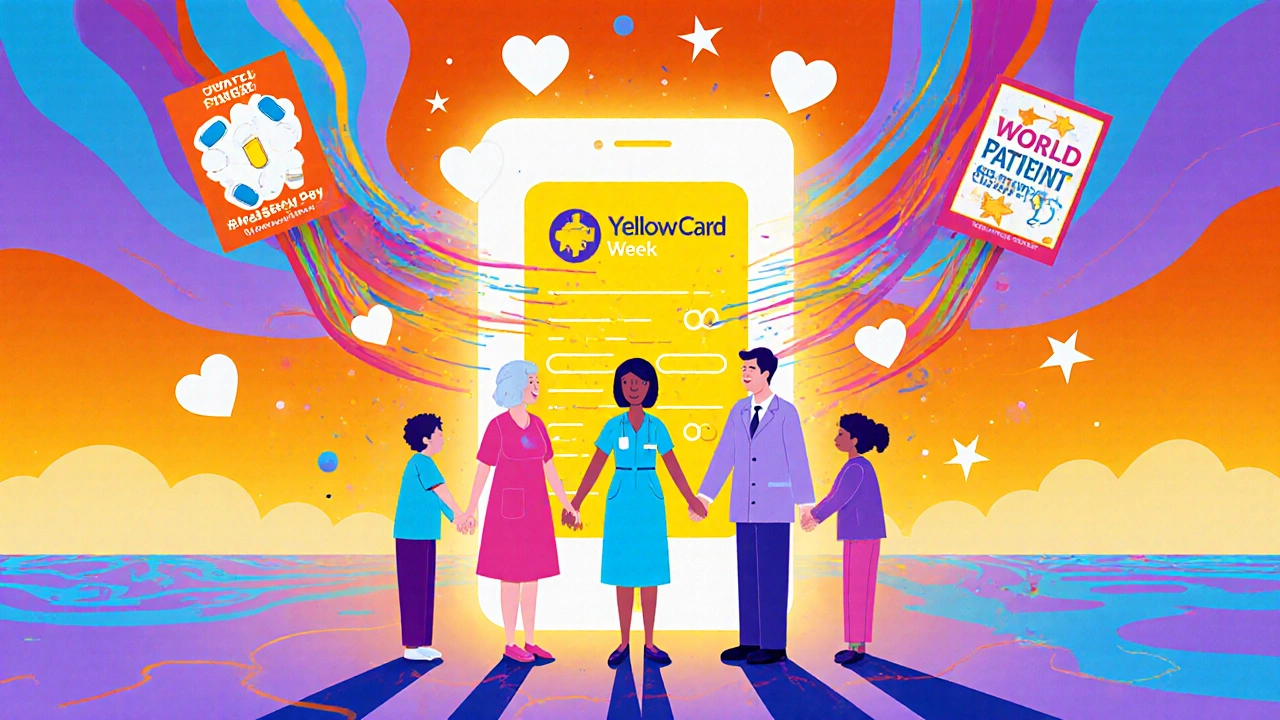
Use the Tools That Actually Work
Knowing where to look isn’t enough. You need the right tools to act.- The Yellow Card App - Available in the UK and many other countries. Snap a photo of the medicine, select the side effect, and submit. Takes 90 seconds. Used by over 2 million people.
- ISMP’s Targeted Medication Safety Best Practices - Released every two years, the 2025-2026 edition includes checklists for pharmacies to prevent dosing errors. One pharmacy in Ohio used their weight-based dosing verification tool and stopped a fatal pediatric overdose last year.
- Medi-Span Clinical Decision Support - Used in hospitals from Saudi Arabia to Australia, this system flags dangerous drug interactions before the prescription is filled. One study showed it cut errors by 40%.
- ECRI/ISMP Top 10 Patient Safety Issues - Published every March, this report lists the biggest threats. In 2025, it included AI misuse, cyberattacks on health data, and social media misinformation. If you’re in healthcare, read this every year.
How to Build a Personal Safety Routine
You don’t need to be a professional to stay informed. Here’s how to make it part of your life:- Subscribe to WHO’s Medicines Safety email alerts. It’s free. No ads. Just facts.
- Download your country’s adverse reaction reporting app by November 1. Set a calendar reminder to check it quarterly.
- Bookmark the UMC and ISMP websites. Check them once a month for updates.
- Join the conversation on social media using #MedSafetyWeek, #ReportSideEffects, or #patientsafety. Share official posts-don’t just like them.
- If you work in healthcare, use the ISMP implementation worksheets. They’re designed to help teams find gaps and fix them.
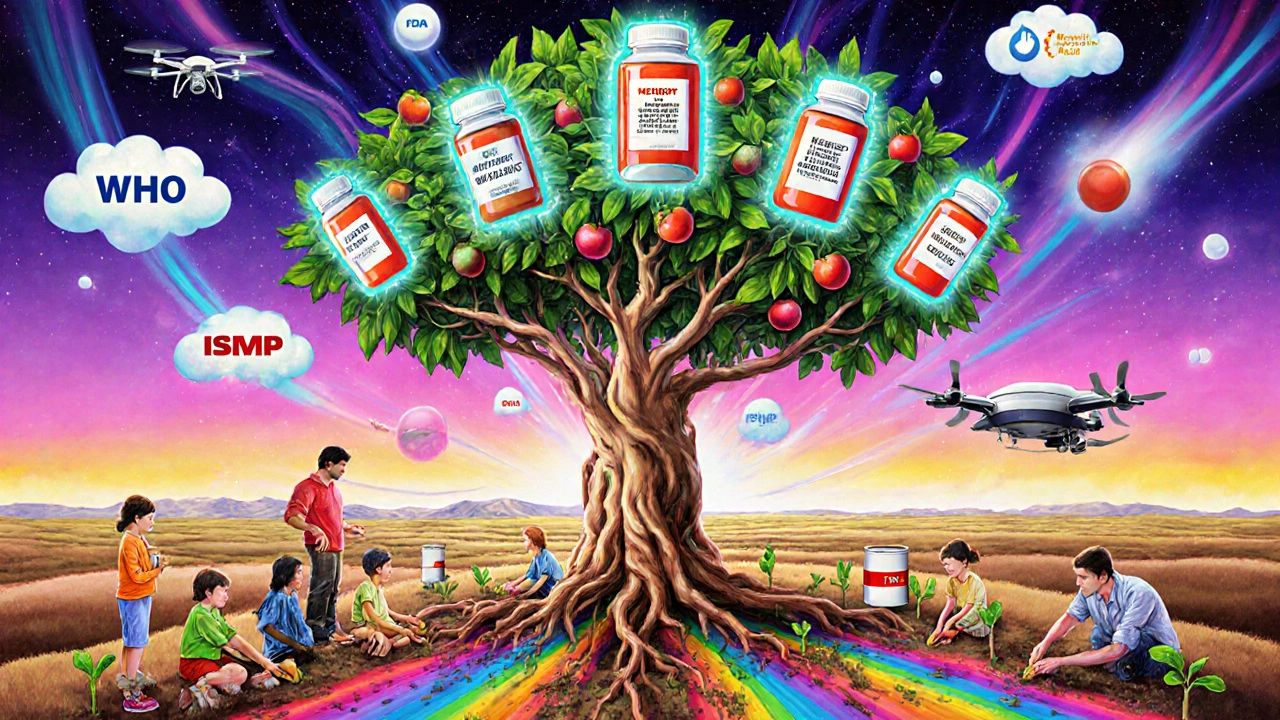
The Biggest Obstacles-and How to Overcome Them
It’s not all smooth sailing. Many countries, especially low- and middle-income ones, still lack basic reporting systems. In some places, fewer than 10 adverse reactions are reported per million people. In the U.S. and EU, it’s 350-400. That gap isn’t just unfair-it’s deadly. Another problem? Fragmented systems. A nurse might report to a hospital system, then to a national database, then to a pharmacy network. No one talks to each other. That’s why so many reports get lost. And then there’s misinformation. Social media posts claiming “this drug causes cancer” without evidence are spreading faster than ever. ECRI says it’s now the third biggest patient safety issue. The fix? Always check the source. If it’s not from WHO, FDA, or your national health agency, treat it like a rumor.What’s Next for Medication Safety?
The future is already here. AI-powered symptom checkers are being tested in 15 countries to help people report side effects faster. Medi-Span is adding machine learning to predict risks before they happen. By 2027, these tools could cut errors by another 15-20%. But technology alone won’t fix this. It still needs people-doctors, pharmacists, patients-to report, to speak up, to demand better systems. The WHO’s 2025 guideline on controlled medicines reminds us: this isn’t just about rules. It’s about dignity. About making sure someone in a rural village in Malawi can get pain relief without fear. About a mother in Ohio knowing her child’s dose is safe. About trust.Start Today. No Waiting.
You don’t need to wait for a campaign. You don’t need to be a doctor. You don’t need to be an expert. Go to the UMC website. Find your country’s reporting system. Download the app. Subscribe to the alert. Share one post. Medication safety isn’t a government job. It’s a human one. And it starts with you.How do I report a side effect from a medication?
Go to your country’s official pharmacovigilance website. In the U.S., use the FDA MedWatch portal. In the UK, use the Yellow Card app or website. In Canada, use Health Canada’s online form. Most systems let you report by phone, online, or mobile app. You don’t need a diagnosis-just the medicine name, your symptoms, and when they started.
Are all side effects reported?
No. Less than 10% of adverse reactions are reported globally. Many people don’t know how, think it’s not serious, or assume someone else will report it. That’s why official campaigns like #MedSafetyWeek exist-to remind everyone that your report matters, even if it seems small.
What’s the difference between WHO and FDA safety alerts?
WHO issues global alerts that affect many countries, especially where local systems are weak. The FDA focuses on drugs sold or used in the U.S. and uses data from 300 million patient records. Both are reliable, but WHO alerts often come first when a risk is identified internationally. Always check both if you’re concerned about a medication.
Can I trust safety info I see on social media?
No-not unless it’s from an official source like WHO, FDA, or your national health agency. Social media spreads misinformation faster than facts. A viral post claiming a vaccine causes paralysis might be based on one unverified case. Official agencies investigate thousands of reports before issuing alerts. Always verify before sharing.
Why do some countries report more side effects than others?
It’s not that side effects happen more often-it’s that reporting systems are stronger. High-income countries have digital tools, public awareness campaigns, and trained staff. Low-income countries often lack funding, technology, or training. That’s why WHO is working to expand reporting capacity in 50 more countries by 2030. More reports mean safer medicines for everyone.
How often should I check for medication safety updates?
If you’re a patient, check once a month. If you’re a healthcare provider, check weekly. The most critical updates come during #MedSafetyWeek (November) and after FDA/WHO alerts. Set a calendar reminder. It takes less than five minutes and could prevent a serious error.

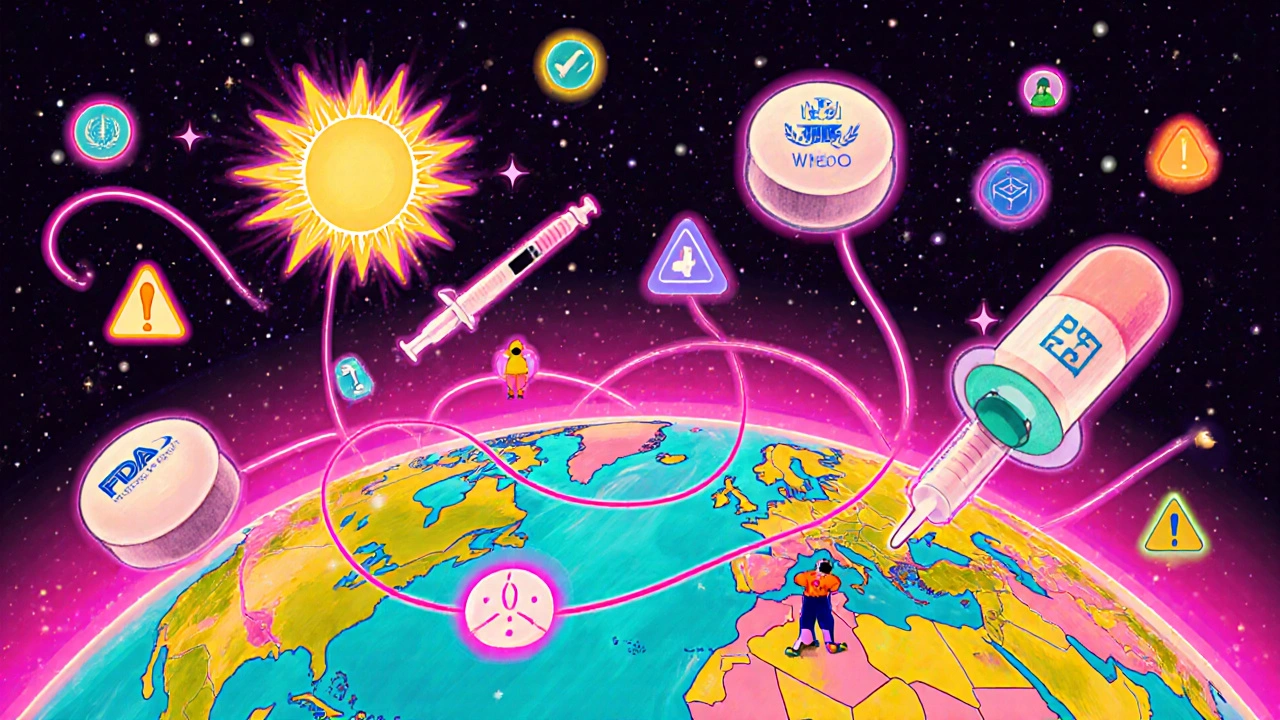
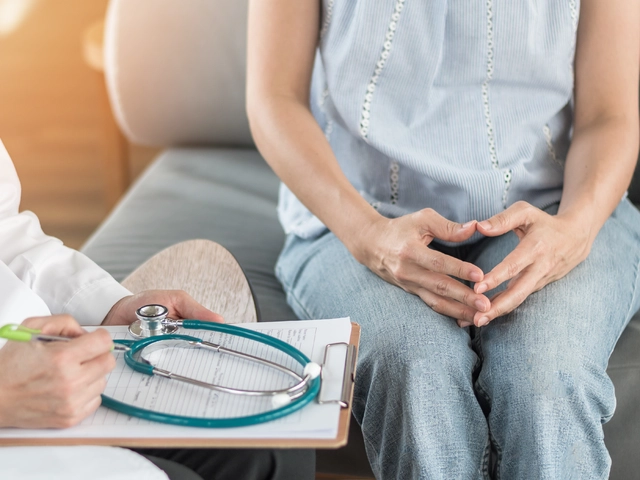
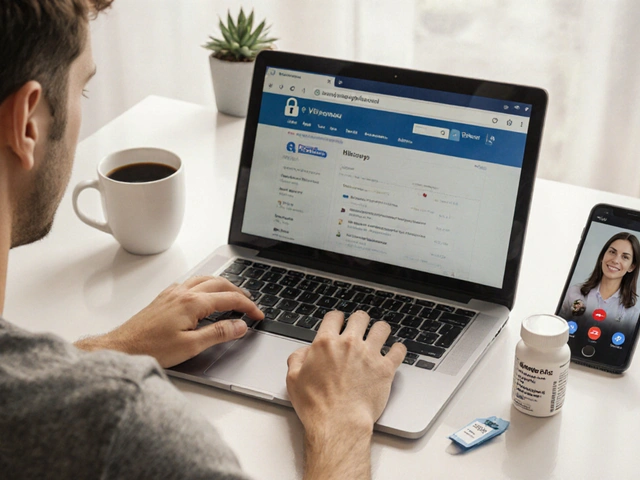




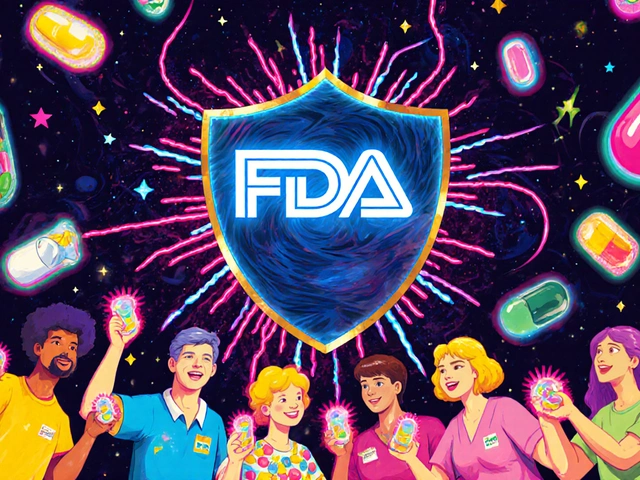
November 14, 2025 AT 08:54
Peter Aultman
Honestly this is one of those posts that makes you feel like you can actually do something. Not just scroll and panic. Downloaded the Yellow Card app last week after reading this. Took 90 seconds. Felt like a superhero.
November 15, 2025 AT 14:33
Sean Hwang
i didnt even know the umc existed until now. like why is this not on every med school syllabus??
November 17, 2025 AT 05:10
Barry Sanders
This is peak virtue signaling. You think reporting a headache counts as 'saving lives'? Wake up.
November 19, 2025 AT 02:08
Chris Ashley
bro why are you telling me to check a website once a month?? just tell me which drug to avoid already
November 19, 2025 AT 13:44
kshitij pandey
In India we have a system called PVPI but most people don't know about it. I shared this post in my local WhatsApp group. Now 12 people are signed up to report side effects. Small steps!
November 20, 2025 AT 03:21
Brittany C
The pharmacovigilance infrastructure described here aligns with the WHO’s Global Patient Safety Action Plan 2021–2030, particularly Pillar 3 on reporting and learning systems. However, the operationalization gap between high-income and low-resource settings remains structurally entrenched due to resource asymmetries.
November 21, 2025 AT 20:30
Sean Evans
LMAO you people actually believe this? WHO and FDA are just pharma puppets. My cousin got cancer from a vaccine and now they're telling me to 'report side effects'? 😂💉
November 23, 2025 AT 04:05
Anjan Patel
You call this 'safety'? In my village, people buy pills from roadside vendors. No apps. No alerts. Just prayers and hope. You think a website fixes that? Pathetic.
November 23, 2025 AT 18:59
Scarlett Walker
I’m a nurse and I’ve been using the ISMP best practices since 2023. We caught a lethal interaction in our ICU last month because of their checklist. This stuff saves lives. Not just theory.
November 25, 2025 AT 07:16
Hrudananda Rath
The epistemological framework underpinning pharmacovigilance, as articulated herein, is predicated upon a Western-centric paradigm of individual accountability, which fundamentally disregards the sociopolitical determinants of health inequity in the Global South.
November 26, 2025 AT 19:17
Brian Bell
Just signed up for WHO alerts. Also downloaded the app. And yes, I'm telling my mom. She's 72 and on 7 meds. She needs this. 💪
November 28, 2025 AT 06:19
Nathan Hsu
I must emphasize, with the utmost urgency, that the dissemination of this information must be accompanied by a comprehensive, multi-tiered, stakeholder-inclusive, culturally-adapted, linguistically-sensitive, and digitally-accessible public health intervention strategy-otherwise, the entire initiative risks becoming a performative gesture.
November 29, 2025 AT 00:53
Ashley Durance
You missed the biggest issue: hospitals don’t even use the tools you listed. Most still use paper charts. This whole thing is a fantasy.
November 30, 2025 AT 13:01
Scott Saleska
Actually, you should also check the EMA database. And maybe look at the FDA’s Drug Safety Communications archive from 2022–2024. It’s more comprehensive. Just saying.
November 30, 2025 AT 14:41
Peter Aultman
Yeah, I saw that comment about paper charts. My hospital switched to digital last year. Took 6 months. But now we get automatic alerts when someone’s on 5+ high-risk meds. It’s not perfect, but it’s better than before.